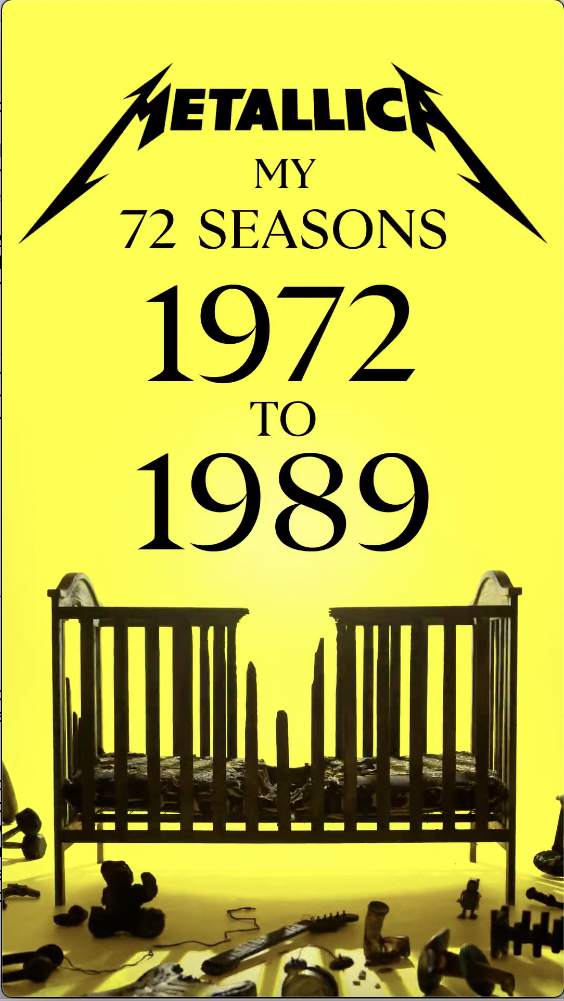
For a band whose previous musical numeracy ran to calling a song ‘One’, Metallica are not a band you normally picture cracking out the calculator and the spreadsheets. Crunching riffs? Absolutely yes. Crunching numbers? Absolutely no.
Maybe the fact their new album is called 72 Seasons has changed all that.
The album title comes from the first 18 years of a person’s life (18 years X 4 seasons per year = 72) and how identities and tastes are formed in this critical time period.
To bring this concept alive for fans, the band and their management, Q Prime, worked with agency The Creative Corporation to build the My 72 Seasons website and playlist generator.
They collated the top 10 rock hits across multiple regions dating back to 1955, the year when acts like Elvis Presley, Chuck Berry and Little Richard started having huge international hits (and, as such, could be taken as the starting point for the rock ’n’ roll era).
This provides the background data for the campaign component built around a dedicated site which invites you to “Relive The Soundtrack Of Your First 72 Season”. You then connect to your Spotify account and it sweeps your listening history. The site then asks you to put in your date of birth and your name.
(Obviously this relies on the user entering their actual date of birth and not a made-up one.)
At the end you get an 84-track playlist that appears to be a combination of the biggest rock tracks from each year and songs that you have had on heavy rotation/have favourited from the time period the Spotify analytics cover.
Wait a minute? 84 tracks? Not 72? The extra dozen tracks are the 12 Metallica tracks from the new album. The playlist opens with the album’s title track and then the closing 11 tracks of the playlist are the remaining tracks on the album, having it operate as playlist bookends of sorts.
We were totally honest in our date input and so the playlist covered 1972-1989 and, as the 1980s progressed, a few Metallica tracks from the era (‘For Whom The Bell Tolls’, ‘Harvester Of Sorrow’, ‘One’) crept in, giving them a streaming boost for the album as well as for a handful of catalogue tracks. The playlist is automatically added to the top of your Spotify playlists.
It would not be a playlist activation if there was not a sharing component as well as a push to buy the album and sign up to the band’s mailing list. All three were present and correct here.
What was most interesting about the sharing side was that it could be shared via Twitter but also via Facebook Messenger and WhatsApp. The most impressive touch, however, was that it allows you to generate downloadable MP4 videos for sharing. One is created in portrait mode so that it fits a phone screen properly for Instagram Stories and the other a more standard “square” video that can be shared on other social platforms.
These videos run for 12 seconds and count down through the years that the playlist covers, all in yellow and black to match the branding of the album cover. It also shows an image of a smashed-up crib suggesting a baby introduced to the power of rock at an incredibly young age who then breaks free from their wooden prison to, presumably, rock freely for the rest of their life.
The Creative Corporation told us there were three main objectives with this campaign element: 1) to drive awareness for the new 72 Seasons album; 2) to drive streams for Metallica’s catalogue; and c) to drive Metallica playlist creations.
The generation of personalised assets for sharing is what elevates this above the standard playlist creation mechanic.
The resulting playlist we got was pretty solid. Obviously it was shaped by the type of music Spotify knows we already like and play a lot, so there were plenty of era-specific rock classics. Interestingly, there were also a handful of tracks we were not familiar with from our first 18 years on earth, so it was not just about pandering to the familiar and then crowbarring in some Metallica tracks.
The one flaw, however, was that the third track, ‘Heart Of Gold’ by Neil Young, was greyed out because he has pulled his catalogue from Spotify. This is something that could have been picked up when running different date ranges in the testing process.
It is the one blemish in an otherwise highly impressive playlist activation that shows that data and analytics do not have to be dry and that they can be, when operating quietly behind the scenes, a way for consumers to discover new music in general, not just new music around one particular act.